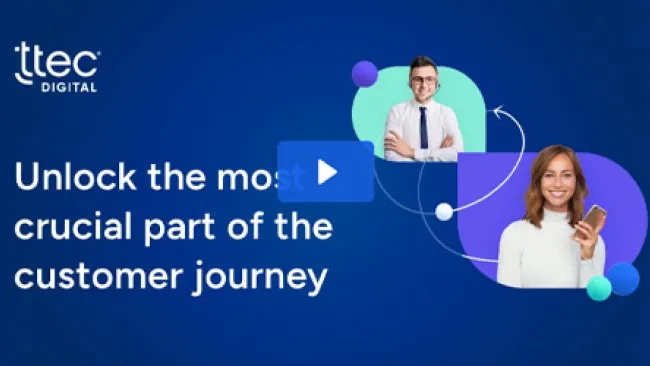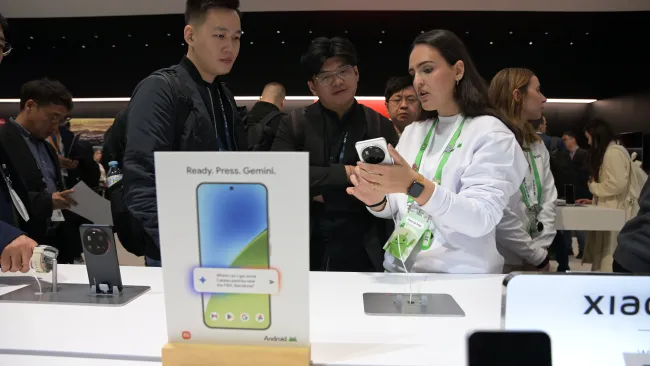The telecom industry is known for its leading innovations. Mobile devices, tablets, advanced Internet applications—all are enabled by operators. But one executive says that real opportunity is found in the simpler things: innovating the customer experience. Du is a 5-year-old mobile operator based in the UAE. The company has grown rapidly since its inception, and now has nearly 48 percent market share. Du Chief Strategy & Investments Officer Raghu Venkataraman says that innovation means empowering customers and keeping your sights on what really matters to core business operations.
Customer Strategist: How do you keep up with the rapid innovation that defines the telecom industry?
Raghu Venkataraman: Customers are ahead of most telcos. The biggest opportunity is to find out what they're already doing and help them do it better. Our mission statement and company philosophy is "Add Life to Life."
We do that in two distinct ways. The first is listening to customers. For a young telco, we do a lot of research through focus groups, surveys, attitudinal exploration, etc. We have to, because the UAE has a very diverse population. Only 10 percent of residents are local. Most of the population is made up of expatriates from the rest of the world—India, Pakistan, Bangladesh, U.K., U.S., and other countries. We need to respect that we have a very diverse audience. Therefore, our segmentation goes beyond traditional value segmentations. We look at subgroups within our customer base and see what their specialized consumer needs are.
With our enterprise customers, we have a 20-person customer advisory board of top business leaders among our customer base that meets regularly to discuss their needs and challenges, along with what we can do to serve them better. They also share customer experience challenges and solutions in a cross-industry discussion.
And we conduct periodic innovation forums with about 600 of our enterprise customers, where we bring in outside speakers to talk about new innovations and trends of interest to executives. It serves as a networking event, but also a chance to learn about new innovations they can bring back to their own companies.
We then use this valuable customer insight to focus on the customer experience. Our dedicated customer experience team is trying to push the limits of what the next generation customer experience could be. For example, we are working with a global design firm to redesign the company's "digital front end" for customers in all channels and to try to make it easier for customers to do business with us. The process is done both to solve customer pain and create customer joy and delight.
CS: You say there's a big misconception about innovation in the telecom industry. What is it?
RV: Most telecom executives are like kids in a candy store. They go to the technology conferences and see all the cool gadgets and services. They want to do the "fun" stuff. But the reality is that telecom operators are not leaders in innovation. We distribute the innovative gadgets and cool technology. Real innovation in our industry comes from being the customer's friend and helping them achieve what they want to get done quickly and effectively. Innovation will come by being the company that's easiest for customers to do business with.
You can't talk about innovation without bringing up Apple. Everyone wants to emulate Apple by producing game-changing, leading-edge products that customers clamor for. But innovation looks different in our industry. Telecom customers want to pay their bill, sort out their issues, and make sure their devices work properly. And most of all, they don't want to be inconvenienced. Therefore innovation for us is all about the experience. The best customer experience with telecom is no customer experience. The fun brand that Apple delivers is not really the core of our services. Our core innovation is to have the customer do it himself, faster and better. Not only is this a customer-based innovation, but it also drives down the costs of doing business. Innovation is simply the fact that the way we have focused on change has changed.
However, sustaining focus on the customer is the challenge. Many telecom leaders are distracted by the cool stuff. But it's the obligation of every telco to be ruthlessly focused on the core of the business. It's the Pareto principle: Look at what drives 80 percent of customer activity and work to improve that.
CS: There's potential innovation in empowering customers, you say. What do you mean by that?
RV: This is the number one area where telecoms are behind the rest of the world. Look at airlines and banks, for example. Customers are doing more than self-service. They now self-create their own experiences. This transition hasn't happened in the telecom industry yet. Other industries exposed their internal processes to customers in order to empower them. We're just beginning to do that. We're starting to give customers the opportunity to do things for themselves.
The reality is that telecom customers only interact with their providers in one of six ways: add, change, delete, ask, pay, and complain. So the root of customer empowerment comes down to two main goals:
- Give customers control across the six dimensions. Time is very valuable to customers. We want to help them manage their lives better. When possible, empower them to self-transact. Customers are telling us what they like. We need to follow them there.
- Simplify the offerings. The space is full of too much complexity now. There is opportunity for us to be the easiest telco to do business with in our market. It becomes a strong differentiator in the marketplace.
With this philosophy, our customer experience team is working on a completely new paradigm. In the retail channel, for example, we trialed new layouts and processes in one store. This allows us to observe real-world customer behavior and feedback. These changes could be incremental—like moving an e-payment machine or adding a couple of service desks, to more profound changes in the layout and flow of customers in the store. It's part of the launch, learn, iterate process. We will go back and make changes based on how customers experience it, which will inform more store layouts. This is just the beginning of a customer experience- and design-led process of improving all our touchpoints with customers.
CS: What advice do you have for other executives when it comes to innovation?
RV: My advice is to try to focus on the core of your business. Kill the other things you're doing that aren't adding value to customers, even if they're cool and exciting.















